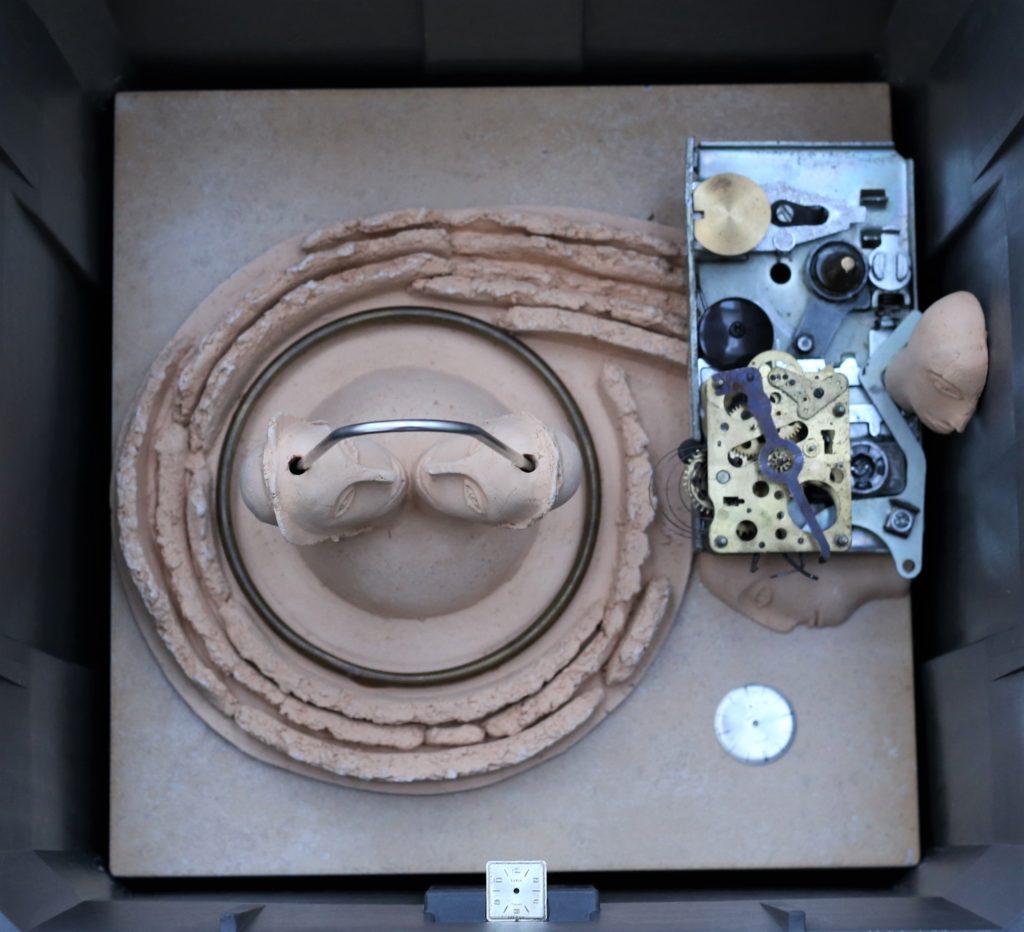Clockwork Memories

Two heads from one body connected with a tube and some obscure piece of mechanism. Just like inter-connected beer tanks at Gubernija brewery holding beverage of uniform taste being brewed from different ingredients.
And what kind of mechanism produces stories from different historical facts?
In this particular work, it is a clock-lock hybrid. These witnesses of history, which left their mark in the wax of time, were discovered by archaeologists not far away from here. It was a farm pit on the property of the Zubov family.
There was a pile of apparently useless items accumulated in the pit. But if we find a key, these items will have stories to tell. All the archives or museum repositories would probably also be just mere piles of items, if not for the human memory and imagination which process the artefacts that have accumulated in the course of history, pass them through their tubes and produce stories about what things unite individuals into a single communal form that we all refer to as “we”.
We only need a key to wind up our imagination for the images to start flowing through the tubes from these places.
And here we see two children of Alexandra Zubova, riding a pony and carrying books from a gymnasium student’s apartment to their mom’s palace suite as they are closely watched by the gendarmes patrolling the streets. What if the gendarmes stopped them? Who knows? But what we do know is that back then you could be put in prison or deported to Siberia for distributing Lithuanian books.
Behold, Alexandra is setting up an orphanage in the former stables of the manor estate.
And out there you can hear the sounds of the Agriculture Fair coming from behind the park.
But when digging in the pit of history, you can sometimes feel your head splitting in two just like in this work by Vitalija Kurtinaitienė, and tubes are needed to link contrasts together.
After all, Platon Zubov was the first one in his family to move here and wind up the clock of his family’s history, and who took an active part in the partition of the Polish–Lithuanian Commonwealth. But here were stand near the Polyphony Concert Hall. The polyphony choir took shape as its members performed the compositions from the period of the Grand Duchy of Lithuania. Art creates things that cannot be taken apart or destroyed and that will always unite us through invisible tubes.
Let’s go on a quest to find a key to the mechanism behind our memory.
Coordinates: 55.9345, 23.314556
